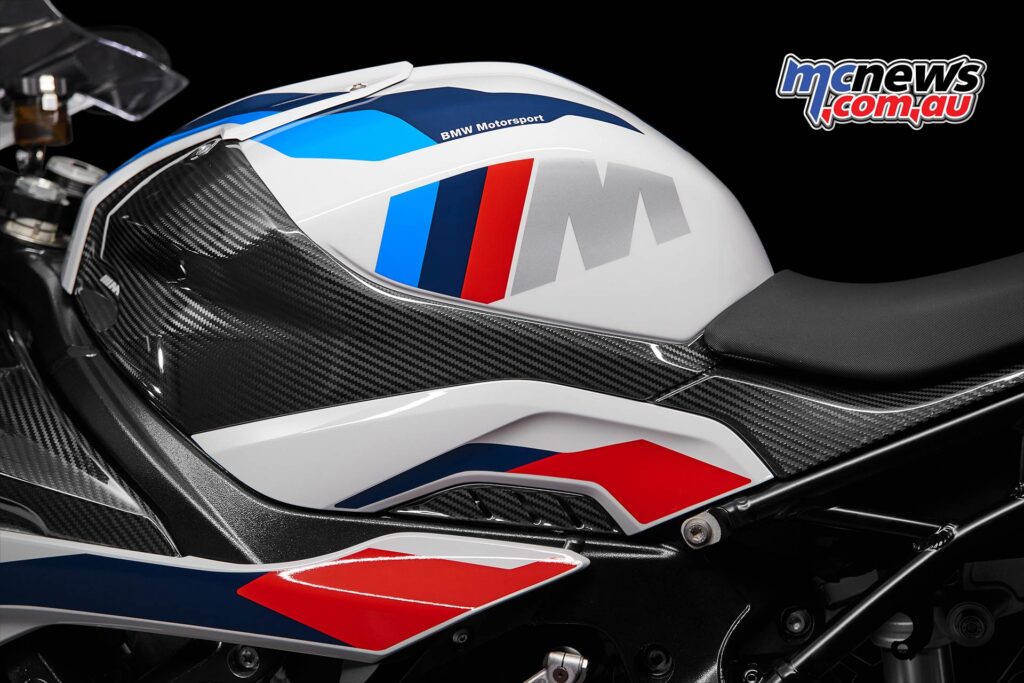BMW M 1000 RR
BMW have released a few high-spec special versions of the S 1000 RR since the model was first launched just over a decade ago and in 2021 we will see an evolution of the model with the new M strategy aimed at pushing the performance envelope of the machine even further. The first M model S 1000 RR was released in 2018 but 2021 will see BMW take the concept further with a limited production model armed with extensive chassis and engine tweaks aimed to maximise racetrack potential.
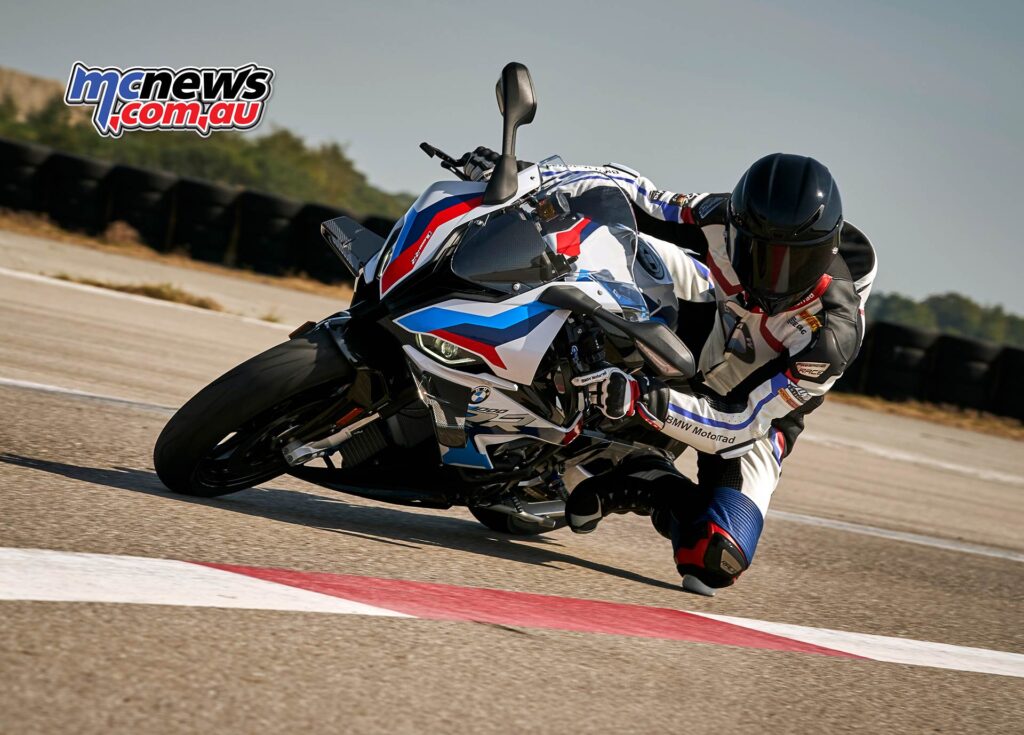
Power has never been something BMW has lacked in any scenario, on the road or on the racetrack, thus many of the changes in these new versions are aimed at refining the chassis for track use in domestic road racing championships around the world.
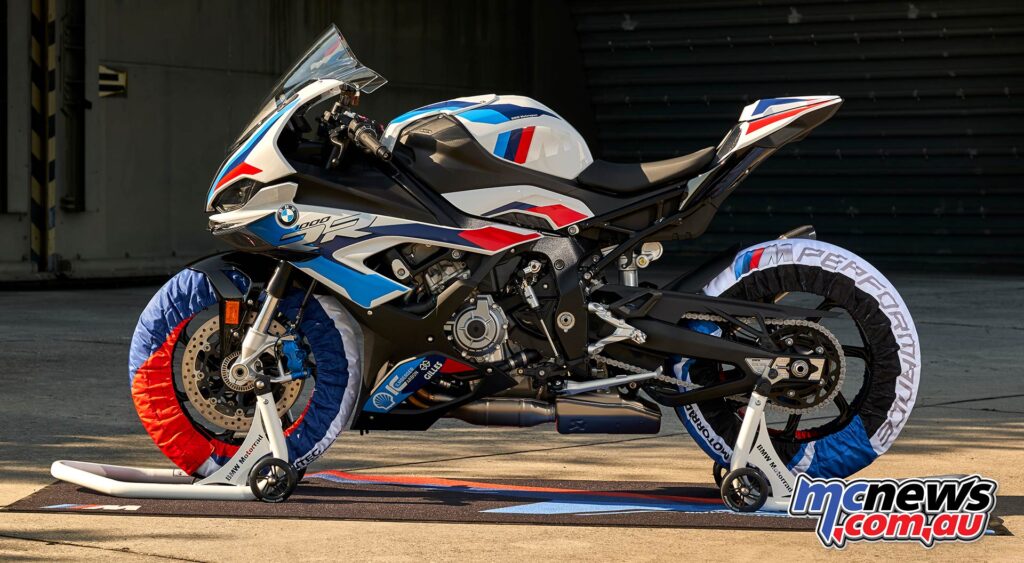
The changes to the swingarm pivot will be crucial in allowing race teams to adapt conventional (non electronic) suspension for better track performance in racing series where the replacement of the pivot is not permitted due to regulations, such as here in ASBK. The suspension strut is bespoke to the M RR for unadulterated race performance and replaces the 87.5mm threaded rod unit of the S 1000 RR.
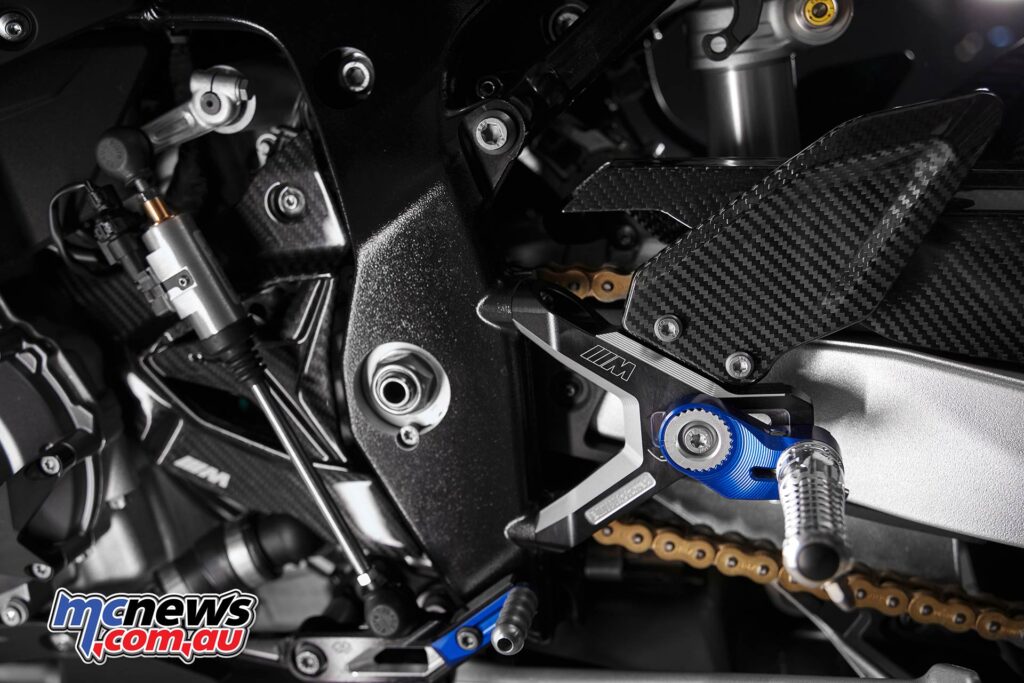
The strut is an eccentric strut type with an initial length of 78mm and an adjustment range of 6mm in seven 1mm increments from 75mm to 81mm.
The linkage ratio has also been increased from 1.63:1 of the S 1000 RR to 1.97:1 – a move inspired by experiences of the race track accessories market.
The spring rate is 100N/mm and a new spring steel has been adopted to reduce weight. In addition, the swing pivot point has been optimised for use in motorsport applications.
Adjustment range is from -2mm to +2mm in 1mm increments – a new feature developed for the M RR.
The chain and thus effective swinging arm length has been extended by one pair of links, resulting in a revised wheelbase that provides the M RR a solid grounding.
The chassis of the new M RR is based on the RR with the bridge frame made of aluminium at its centrepiece. It has optimised Marzocchi forks as well as a revised central spring strut with blue spring and Full Floater Pro kinematics.
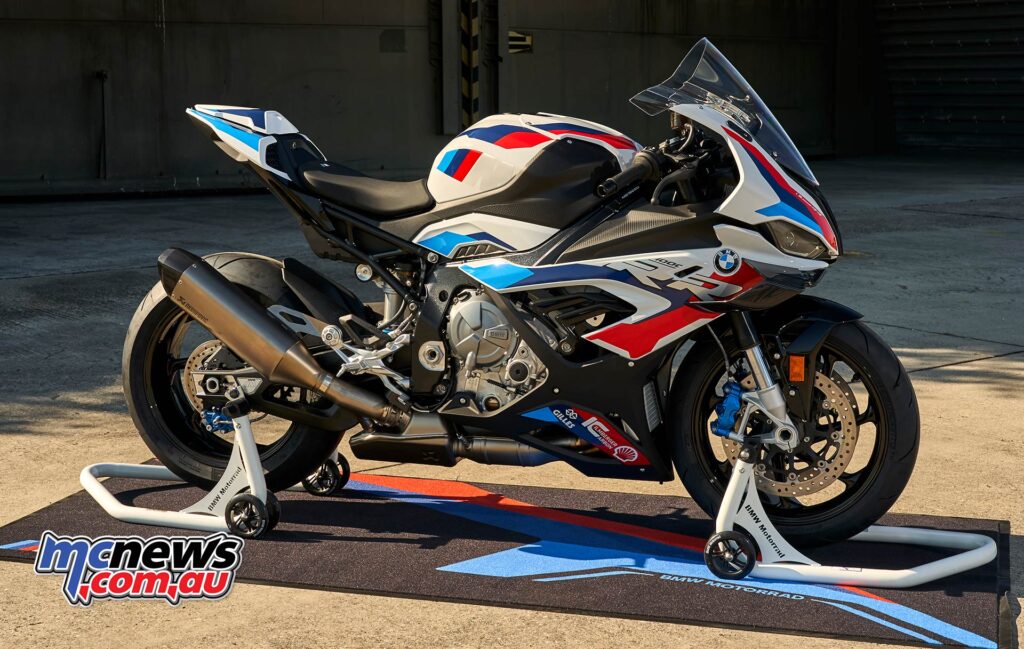
In addition, the top and bottom fork bridges are entirely milled, black anodised and are approximately 20 grams lighter than those used on the S 1000 RR.
M carbon wheels, which are fitted as standard, provide additional stiffness while lowering unsprung weight to increase performance potential. This also changes front wheel load distribution from 53.8 per cent of the S 1000 RR to 52.1 per cent for the M RR.
With the new M RR, there is a BMW motorcycle with an M branded brake system, for the first time. Externally, the M brake callipers have a blue anodised coating in combination with the famous logo and we believe they are produced by Nissin.
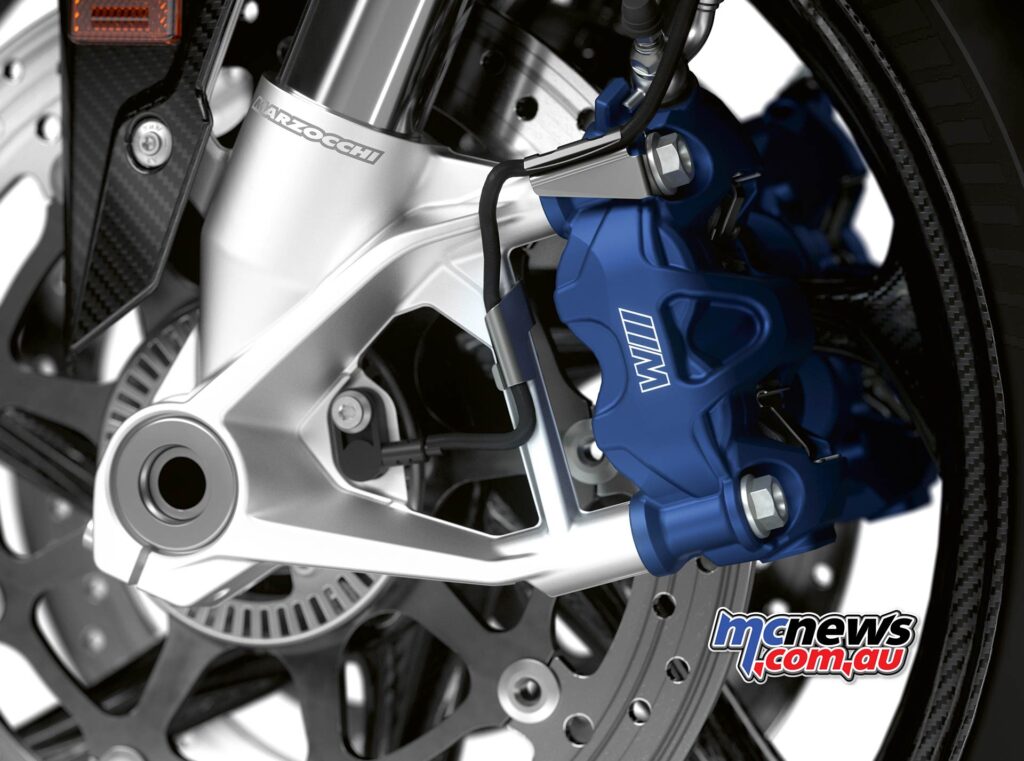
The new M RR uses a water-cooled four-cylinder in-line engine based on the RR power train with BMW ShiftCam technology for varying valve timing and valve lift that has been modified comprehensively in the direction of a racing sport engine.
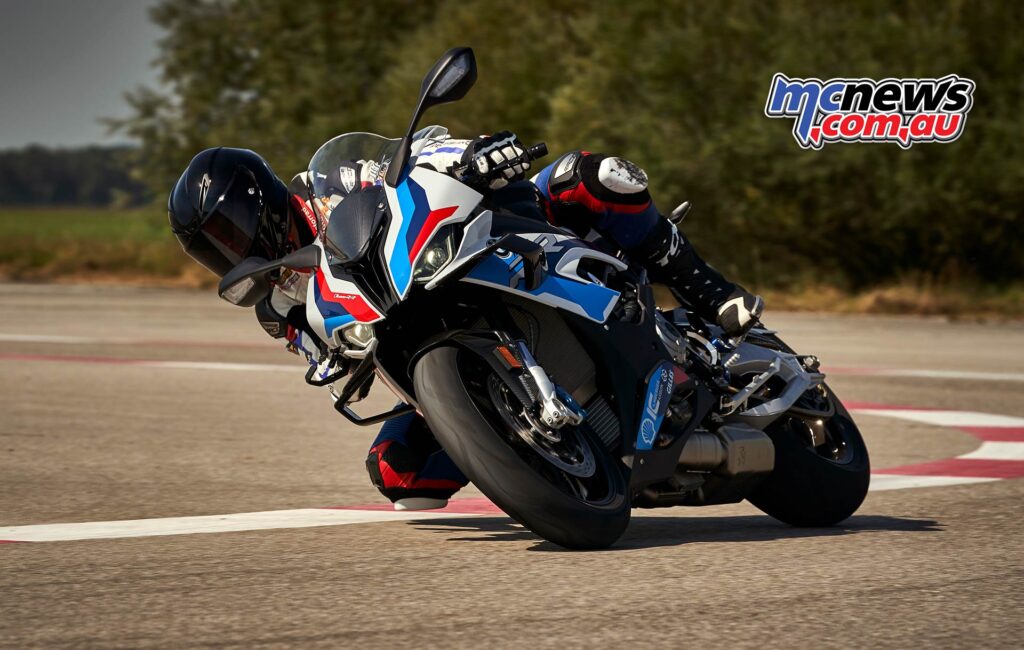
It achieves its peak output of 156 kW (212 HP) at 14,500 rpm. The maximum torque of 113 Nm pumps hardest at 11,000 rpm. The new M RR engine is more powerful than the RR power train in the range from 6,000 rpm to 15,100 rpm, a range that is particularly relevant for race track driving dynamics and that 15,100 rpm limit is higher than found in the regular S 1000 RR.
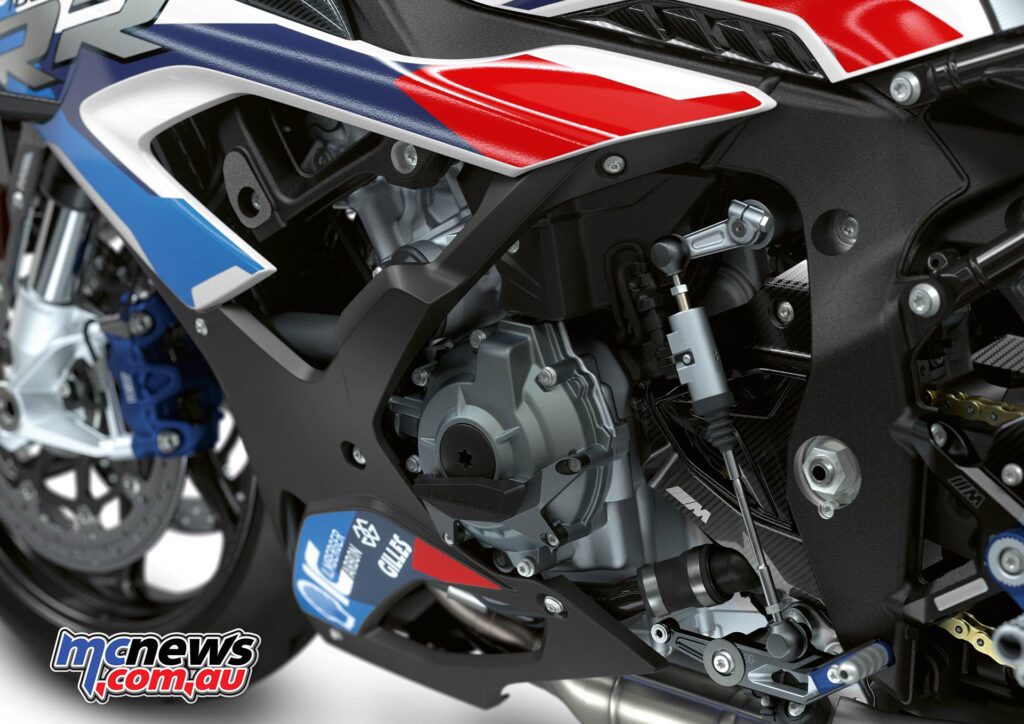
The M RR engine has extensive technical optimisations such as new two-ring forged pistons from Mahle, adapted combustion chambers, compression increased to 13.5, longer and lighter titanium connecting rods from Pankl, slimmer and lighter rocker arms, fully machined intake ports with new duct geometry as well as optimisations on camshafts and intake area.
The lightweight exhaust system is also made of titanium.
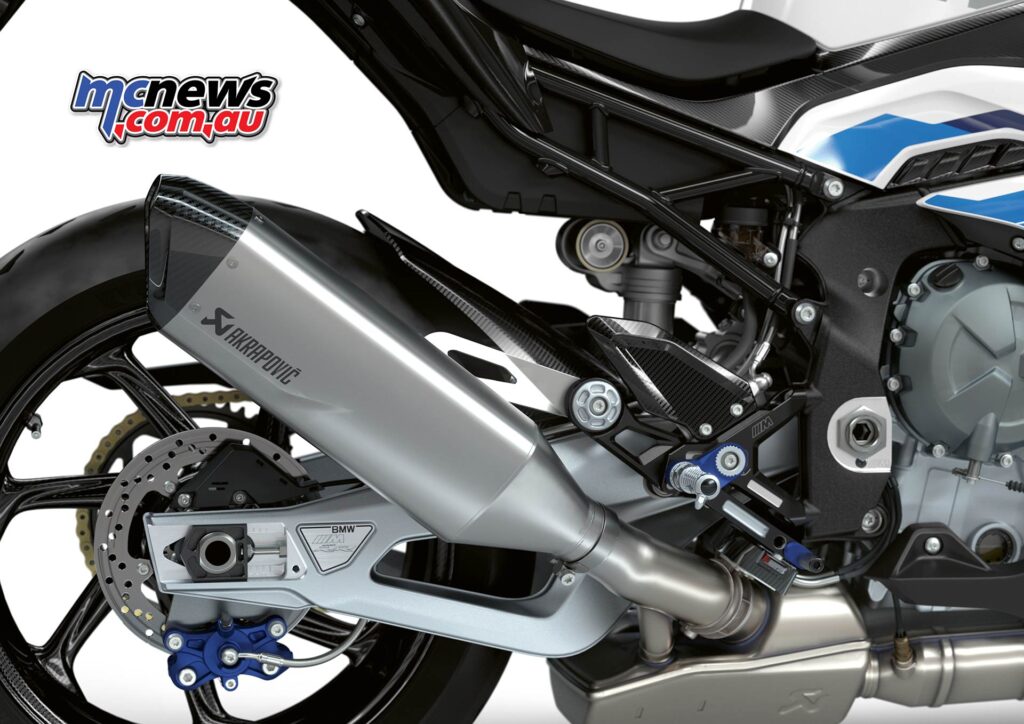
Highlights of the new BMW M 1000 RR
• M RR four-cylinder engine based on the RR engine for racing sport. Even more peak power, higher torque in the medium range and 500 rpm more maximum speed.
• 156 kW output at 14 500 rpm and thus 4 kW more than in the RR. Maximum torque of 113 Nm at 11 000 rpm.
• New 2-ring forged piston 12 g lighter, adapted combustion chamber and compression increased to 13.5. In addition, slimmer and lighter rocker arms.
• Fully machined intake ports with new duct geometry and BMW ShiftCam technology for varying the valve control time and valve lift.
• Titanium valves, on the exhaust side with new spring assembly, slimmer and 6 % lighter rocker arms and optimised camshafts.
• Very light, compact engine block with longer and 85 g lighter titanium connecting rods from Pankl for reduced friction power and less weight.
• Anti-hopping clutch without self-reinforcing for optimum Launch Control.
• Optimised differentiated intake system with shorter intake funnels for optimised gas exchange at high rotational speeds.
• New, 3,657 g lighter exhaust system with exhaust manifold, front silencer and rear silencer made of titanium.
• M winglets and high windscreen: Braking later and accelerating earlier and more stability when cornering thanks to the aerodynamic downforce without any reduction in maximum speed.
• “Rain”, “Road”, “Dynamic”, “Race”“ and “Race Pro1-3” riding modes and the latest generation of the Dynamic Traction Control (DTC) and DTC wheelie function with 6-axle sensor box.
• Two adjustable characteristic throttle curves for optimum response characteristics. Engine brake with threefold adjustable engine drag torque in “Race Pro” mode.
• Shift assistant Pro for shifting gears up and down without clutch. Simple reversibility of the shift pattern for race track use.
• Launch Control for perfect race starts and Pit-Lane-Limiter for precise speed in the pit lane.
• Hill Start Control Pro for convenient starting on slopes.
• Chassis design trimmed for race track use with modified geometry, optimised wheel load distribution and extended adjustability of the swinging arm pivot point.
• Optimised upside-down fork and revised central spring strut with Full Floater Pro kinematics.
• M brakes for the first time at BMW Motorrad: The M RR with maximum braking performance for the race track.
• M carbon wheels: Classy high-tech components for maximum performance on race track and road.
• Instrument cluster with large, perfectly readable 6.5-inch TFT display, starting animation with M logo and OBD interface that can be used with activation code for the M GPS data logger and M GPS laptrigger.
• Lightweight M battery, USB charging socket in the rear.
• M design and dynamic form language indicate ultimate race track performance.
• M competition package with M GPS laptrigger and activation code, M milled parts package, M carbon package, silver, 220 g lighter swinging arm, DLC-coated M endurance chain and passenger package including tail-hump cover.
• Comprehensive optional accessories and optional equipment ex works.
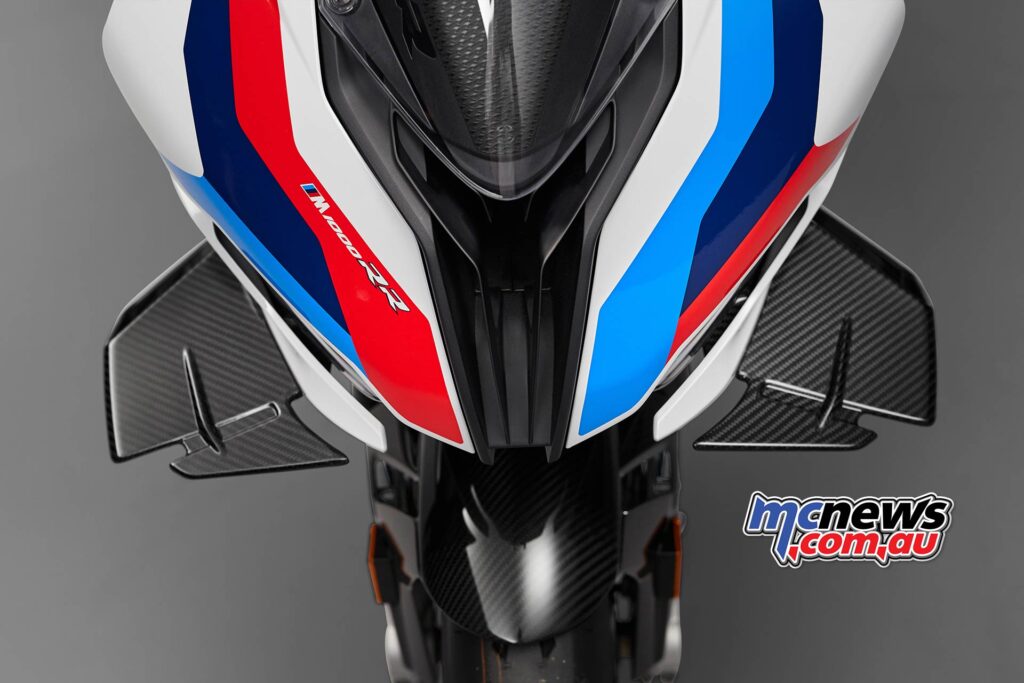
The aerodynamics were a decisive point in the technical specifications for development work of the M RR. In addition to a maximum speed that is as high as possible and absolutely necessary for winning races, there was another objective in the technical specifications of the M RR: to establish the best possible contact of the wheels with the road – especially when accelerating.
The M winglets on the trim front, which were developed during intensive testing on the race track and in the BMW Group’s wind tunnel and are made of clear-coat carbon, take this into account as they produce aerodynamic downforce and thus additional wheel loads according to the speed.
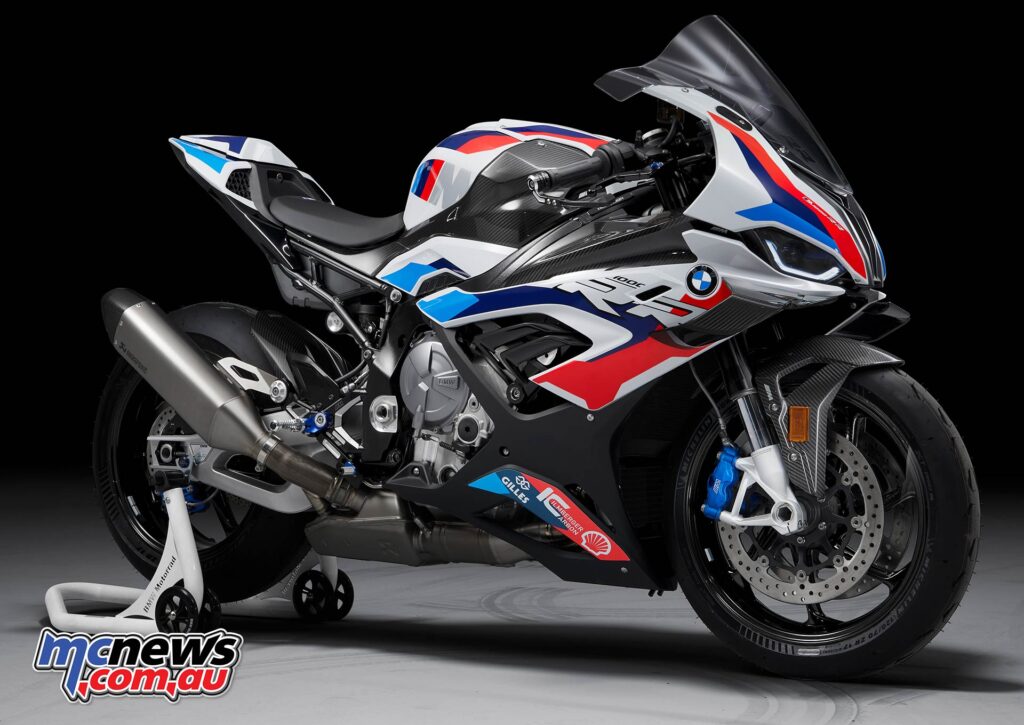
The additional wheel load on the front wheel counteracts wheelie inclination, traction control regulates less, more driving power is converted into acceleration and the driver achieves faster lap times. The effect of the winglets is also noticeable in curves and when braking, the downforce allows later braking and ensures increased cornering stability. The additional downforce developed at speed is significant, with 13.4kg generated on the front axle and 2.9kg on the rear at 300km/h.
The instrument cluster of the new M RR has the same basic design as the RR and has an M start animation. As part of the optional equipment, an activation code (contents of M competition package) can be used to provide comprehensive data material for the use of the M GPS laptrigger and M GPS data logger (Original BMW Motorrad Accessories) via the OBD interface of the instrument cluster.
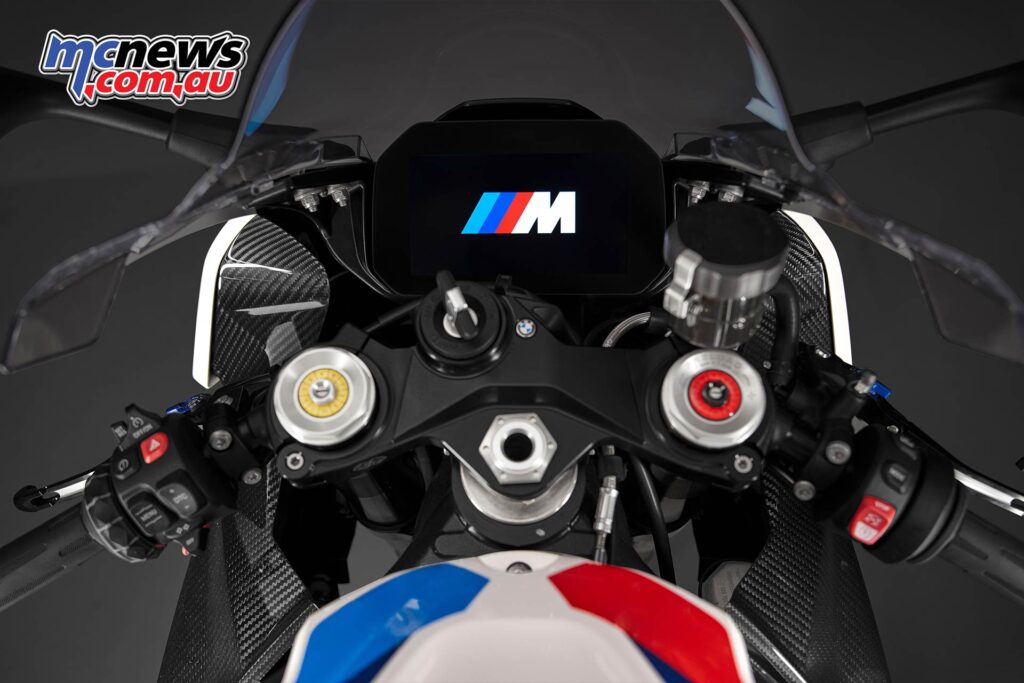
For those who are still not satisfied with the new M RR in standard trim, the M competition package provides a fascinating mixture of classy components for the racing technology gourmet and the aesthete at the same time. In addition to the M GPS laptrigger software and the corresponding activation code, the M competition package also includes the M milled parts package, the M carbon package as well as a silver 220 g lighter swinging arm, the friction-optimised, maintenance-free and DLC-coated M Endurance chain and the passenger package including tail-hump cover.
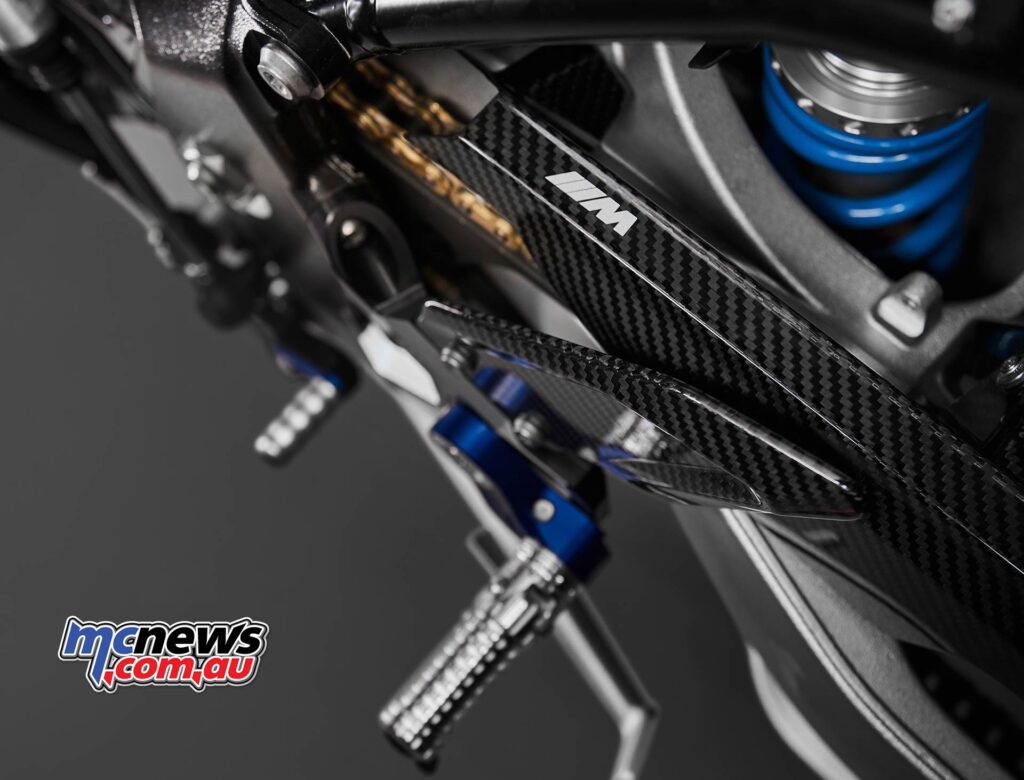
The new machines are scheduled to arrive in Australia around March 2021. The M RR will retail for $50,990 +ORC and is the variant aimed primarily at racers and trackday nuts, while the upper spec’ Competition Package with all the extra bling will sell for $57,990 +ORC GST. Two are on order for the NextGen BMW ASBK squad and 25 of the limited production machines are heading to our shores which will ensure their eligibility to compete in the Australian Superbike Championship.
